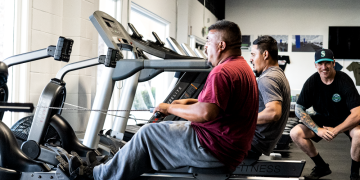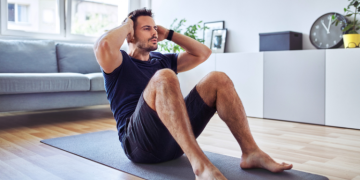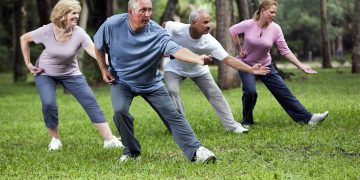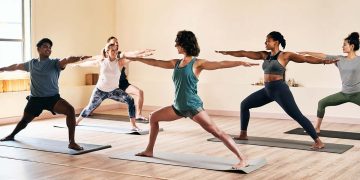In an age where fitness is celebrated across social media and performance goals dominate gym culture, few exercisers stop to ask: Is my workout actually improving my posture—or silently sabotaging it? While many exercises are praised for building strength, toning muscles, or enhancing endurance, not all of them support optimal spinal alignment. In fact, some of the most popular movements in modern routines can, when done with poor form or imbalance, contribute to slouching shoulders, exaggerated lumbar curves, or neck strain. So how can you tell if your workout is helping or harming your posture? And more importantly, what can you do to make posture-conscious choices in your fitness journey?
Understanding Posture: Beyond Standing Tall
Posture isn’t just about looking confident in a photo or walking upright—it’s about the proper alignment of bones and muscles that allows your body to function efficiently. Good posture supports breathing, circulation, digestion, and injury prevention. Poor posture, on the other hand, leads to muscular imbalances, chronic tension, and often pain. Your spine’s natural curves—the cervical (neck), thoracic (mid-back), and lumbar (lower back)—are designed to absorb shock and distribute loads. Exercises that reinforce the integrity of these curves are posture-positive. Exercises that create or exacerbate muscular imbalance often do the opposite.
The Most Common Posture-Related Mistakes in Workouts
Many people unknowingly reinforce poor postural patterns in their training. For example:
- Overworking the chest while neglecting the upper back: This imbalance pulls the shoulders forward, promoting a hunched posture.
- Doing endless crunches with poor core engagement: Instead of strengthening the deep core, it may shorten the hip flexors and round the spine.
- Lifting weights with a forward head or rounded shoulders: Common in shoulder presses and rows, this mistake can reinforce cervical and thoracic misalignments.
- Neglecting posterior chain exercises: A weak posterior chain—glutes, hamstrings, spinal erectors—fails to counterbalance the forward pull of daily activities like sitting and screen use.
Posture-Friendly Exercises: What to Prioritize
The good news? Your workout can absolutely enhance posture—if you train smart. A posture-friendly routine emphasizes balance, alignment, and muscular symmetry. The following exercise categories support postural integrity:
- Scapular Stabilization Exercises
These include face pulls, prone Y-T-W raises, and resistance band pull-aparts. They strengthen the muscles around the shoulder blades, promoting retraction and depression of the scapulae—key for reducing rounded shoulders. - Core Stability Movements
Planks, bird-dogs, dead bugs, and anti-rotation presses activate deep core stabilizers like the transverse abdominis and multifidus, which support spinal alignment and resist overextension or flexion. - Glute and Posterior Chain Training
Exercises like hip thrusts, Romanian deadlifts, glute bridges, and kettlebell swings activate the glutes and hamstrings, which often become dormant in sedentary lifestyles. This reduces reliance on the lower back for movement and helps maintain pelvic alignment. - Thoracic Spine Mobility Work
Foam rolling the upper back, thoracic extensions over a roller, and open book stretches improve thoracic mobility, countering the effects of hunching. - Neck and Cervical Alignment Drills
Chin tucks, wall head retractions, and light neck isometrics help re-educate the neck into alignment and reduce forward head posture.
Posture-Harming Movements: Rethink or Replace
Certain exercises, especially when done incorrectly or excessively, can negatively impact posture. These include:
- Traditional Sit-Ups and Crunches: These often reinforce spinal flexion and may overwork the hip flexors, pulling the pelvis into anterior tilt. Substitute with planks and dead bugs.
- Heavy Bench Pressing Without Back Work: Overtraining the pecs while neglecting the rear delts and upper back reinforces kyphosis (rounded thoracic spine). Balance benching with rows and pull-ups.
- Overhead Pressing with Limited Mobility: If you can’t fully extend your arms overhead without compensating with the lower back, pressing can create lumbar strain. Improve shoulder mobility first or opt for landmine presses.
- Machine Leg Presses with Posterior Pelvic Tilt: Rounding the lower back during leg presses compresses the spine. If using this machine, ensure neutral spine contact and control your range.

Posture-Correcting Alternatives: Move Smarter
To make your workouts posture-enhancing, consider integrating these simple tweaks:
- Pull Twice for Every Push: For every push movement like push-ups or bench press, do two pulling exercises like rows or face pulls. This helps balance the anterior and posterior musculature.
- Train Barefoot or in Minimal Shoes: Improving foot stability and alignment feeds upward into ankle, knee, and hip positioning, all of which influence posture.
- Add Isometric Holds: Static holds (like wall sits, planks, or hollow body holds) activate stabilizer muscles and improve neuromuscular awareness.
- Use Mirrors or Video Feedback: Watching your form is one of the best ways to correct posture-related deviations during workouts.
- Incorporate Functional Movement Patterns: Movements like Turkish get-ups, carries, and crawling patterns require total-body coordination and reinforce structural integrity.
The Role of Breathing in Posture
Few people realize that breathing patterns directly affect posture. Shallow, chest-dominant breathing tightens the neck and upper traps while reducing diaphragm function. Proper diaphragmatic breathing supports core stability and elongates the spine. Train this with crocodile breathing (lying on your stomach and breathing into the floor) and box breathing during warmups or cooldowns.
Posture and Flexibility: Mobility Must Be Earned
Stretching is often recommended to fix posture, but it’s only half the story. Stretching tight muscles (like hip flexors, chest, and upper traps) must be paired with strengthening their antagonists (like glutes, lower traps, and deep neck flexors) for meaningful change. Simply lengthening muscles doesn’t ensure better posture—strength and motor control are essential.
Desk Life vs. Gym Life: The Missing Link
Many posture issues aren’t caused in the gym—but the gym can either correct or worsen them. Desk jobs, phones, and long drives place the body into prolonged flexion. Without intentional movement that opens the chest, strengthens the posterior chain, and mobilizes the spine, your workout may end up reinforcing your daily posture rather than correcting it. A smart warm-up that opens the hips and thoracic spine is your daily antidote to this seated life.
Personalizing Your Posture Plan
Posture isn’t one-size-fits-all. People with hyperlordosis (excessive low back arch) need different corrections than those with kyphosis (rounded upper back). Likewise, if you’re a runner, lifter, or yogi, your dominant movements will impact your spinal alignment in different ways. A movement assessment from a trained professional, combined with body-awareness during training, can give you a personalized path to better posture.
Conclusion: Train for Strength and Symmetry
Posture isn’t fixed in one workout—it’s shaped daily by your choices in and outside the gym. By training for strength and symmetry, by balancing pushing and pulling, by pairing mobility with stability, you can build a body that not only looks strong but functions efficiently. Good posture is not just aesthetic—it’s a foundation for long-term health, performance, and injury prevention. The best workout isn’t the one that leaves you sore or sweaty—it’s the one that leaves you standing taller, moving freely, and feeling aligned.

















































